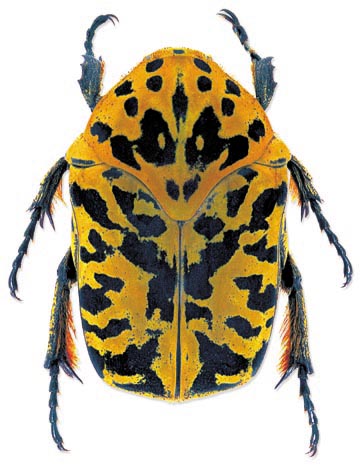Chuck wrote: Wed Mar 15, 2023 1:45 pm
...I would not know how to reproduce this white Goliathus.
I just checked my e-mail records, and it turns out that back in 2015, I had a lengthy discussion with a colleague / fellow collector about this exact cacicus specimen, which was first offered on eBay as early as 2014, and he stated that he had previously achieved the same coloration result on a cacicus specimen by submerging it for a time in a powerful solvent, in an effort to degrease it. I feel I should point out that the dealer who was offering it on eBay
(who if it was who I think it was), is highly reputable, definitely would not have been trying to deceive anyone, and was undoubtedly totally unaware that this specimen had been altered (either intentionally or unintentionally).
I see that there was also a previous discussion of this specimen here on the forum (Apr 2014) -
https://archive.insectnet.com/thread/55 ... aberration
Certainly, I would not recommend using anything stronger than acetone to degrease beetles. Actually, I've really been hoping to find some effective alternative to acetone, as I have a considerable number of large, very greasy beetles in my collection that need treatment (including Goliathus spp.), and would much prefer not to use acetone, as the vapors are not only toxic, but also dangerously flammable. The chemical is also rather expensive, and difficult to dispose of properly. So, if anyone can suggest a safe and effective alternative to acetone, please do.
While we're on the topic of color-altered beetles: Dynastes hercules specimens with bluish-grey elytra (which apparently
do occur naturally, but only very rarely) used to be among the most expensive beetle specimens, and some collectors have paid huge sums for them. However, some years ago, insect dealers in Japan worked out a method for altering normally-colored specimens to produce perfect "blue" ones, using UV lamps. This soon crashed the market for such specimens.
The cacicus specimen in question, may have arrived at its pale hue via either chemical treatment, or by exposure to UV light, and this could have been either intentional, or unintentional. I'd certainly not be willing to test it due to the value of cacicus specimens, but it's also possible that a cacicus, simply left out in the sun, even with just the intention of dehydrating it, may quickly fade.












